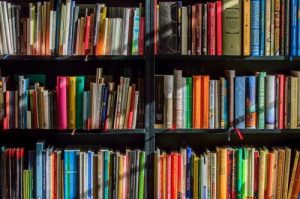Reading our life in common

There is nothing like the take-and-leave bookshelves at the local recycling center to remind us of who we are, where we’ve been, and where we’re headed. I have been visiting the take-and-leave shelves for decades, unloading books I’ve read or that I’ve finally admitted I never will and picking up what looks like it might be interesting.
A book can be interesting because it’s one you’ve always wanted to read, or maybe it’s something by a favorite author, the winner of a prestigious literary prize, a source of information about one of life’s challenges, a timely guide for vacation planning, a copy of a lost book that carries fond memories, or an old volume that looks valuable.
I have found all of these at the town dump – more than I can read, too many to keep and just enough to return to the shelves where I found them in the first place. So now when I visit the take-and-leave library, I take less, try to leave more and think about what this exchange tells us about who we are.
We live in an age when it has never been easier to find books on any topic that piques our interest. Libraries, bookstores, and giant online warehouses carry all the titles we need, neatly organized by subject matter, title and author in places we can visit and places we can access simply by clicking a link on the screen of one of our devices.
The history of the human race, the lifecycle of the gypsy moth and everything you’ve ever wanted to know about psychology are all there for fair price, a few questions to a bookseller or librarian, some digging in the archives, or a simple library card. As convenient and comprehensive as these sources of information are, they lack the storytelling force of the recycling center’s take-and-leave shelves.
Today, as I scanned the contents of the bookshelves, I saw the familiar jumble of volumes with colors bright or faded, covers intact or torn, some books standing tall, others leaning against their neatly stacked or haphazardly piled neighbors. The good Samaritan who straightens the books apparently had not made his rounds for several days and, in his absence, residents came and went, deposited their cargo, browsed the inventory and took what they wanted.
The resulting jumble had all the messiness of real life, none of the ease of finding exactly what you want where you expect it to be, and all the surprise of those odd juxtapositions that make life interesting.
And so it was that the “Gingerbread Baby” and “The Flopsy Bunnies” settled down with a counting book alongside a detective novel about a serial killer and another book that one reviewer described as a “tale of family and friendship, tragedy and triumph, loss and love.” Who’s to say if the same person left all of these books, especially when the shelves were in disarray?
Yet they were stacked together in a similar way and there’s nothing that we know about the human psyche that would make such a combination of interests impossible. People are complicated, and the bookshelves at the town dump say that there are stories here that go beyond the content of the books.
Other stories on display at the recycling shelves are easier to follow. These are the tales told by piles of books that readers have used to guide them along the path of growth, change, and maturation. “Caring for Your Baby and Young Child” sits next to the “Top 100 Baby Purees,” and both of them join “Outdoors with Kids in Boston” to tell the story of family life with growing children.
Other groupings contain texts on coping with learning problems and emotional challenges, and when we see these books next to guides to Disney World, we might imagine the balance that the parents were trying to achieve between sorrow and joy, work and play. We hope they succeeded.
At the bookshelves, you can always count on the appearance of study guides for college admissions and advance placement tests. Today’s sample included the SAT and exams for math, chemistry and biology. The books were 11-years-old, which would make the high school senior who used them 28. With such diligent preparation, you have to believe he got into the college of his choice, graduated with honors, and went on to complete medical school. He could be just out of his residency and starting to see patients.
One of them could be the retired lawyer who dropped off a collection of his legal texts or the doctor who left us with “Radioactive Imaging for Regional Anesthesia and Pain Management” along with “Your Complete Retirement Road Map.”
The take-and-leave bookshelves are brimming with stories, but they go far beyond the ones contained in the texts. They are the stories of families with young children, students, empty nesters, travelers, people facing medical challenges, collectors, retirees and people with broad tastes in reading including everything from beach reads to serious literature and nonfiction. They are uniquely individual and broadly communal, reminding us always of the life we share, the path we travel and the strength we draw from one another.
